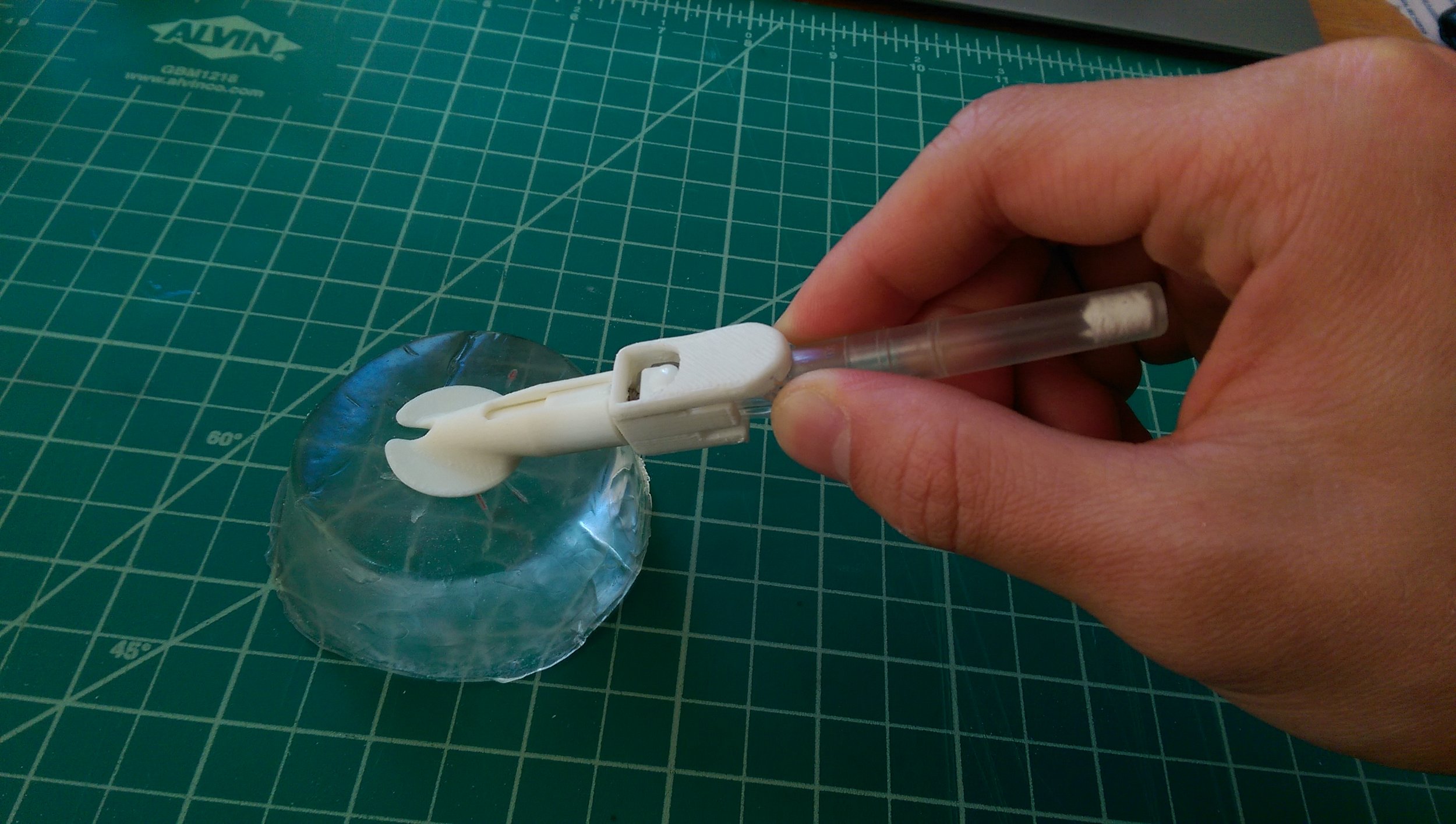LUMEE
IMPLANTABLE MICRO-SENSOR INJECTOR
Human Centered Design | Plastic Parts, Mechanism Design | Industrial, Interaction Design | Human Factors | User Testing
Personal health changes continuously throughout our lives, but we only get a good glimpse of it at discrete moments in time. What if we could continuously monitor our physiology in order to adjust to our bodies in real time? Some wearable devices have begun tracking this data externally with on-skin sensors, but much of the most valuable information lies beneath the surface.
LUMEE is an implantable micro-sensor system that enables continuous monitoring for clinical-grade personal healthcare. San Francisco-based biomedical startup, Profusa, worked with a collaboration between Herbst Produkt and Serve PD to make this a reality. Although my main role was product design engineering for the injector subsystem, I also contributed to industrial design, human factors, and user testing across the full system.
ACCOMPLISHMENTS
Edison Award, 2016
Innovation By Design Award (IBDA Fast Company) 2016
SUMMARY
form concept sketches
Our project team consisted of two industrial designers and two engineers. Interdisciplinary collaboration was the most rewarding aspect of this project for me. With such a nimble team, questions of form or function weren't reserved to one group or another - they were team challenges that were addressed together.
These sketches are some examples of my contributions to Lumee's form development during the initial stages of the project. Considerations included patient comfort, hand geometry, touch points, and sensor placement requirements.
FUNCTION CONCEPT SKETCHES
Physical interaction design was extremely important for this handheld medical device. We needed to design a device that was comfortable and easy to operate but also precise enough to place delicate sensors just below the skin, parallel to its surface.
One of the most interesting insights from our research interviewing doctors and nurses was the technique of holding injectors from the sides to avoid knuckles getting in the way. Another unexpected learning was that injections that require parallel placement actually require a two-step process: the skin is first pierced at a steep angle before rocking the injector backwards to a shallow angle for insertion. These two insights informed the shape of the device as well as the mechanisms that were designed to perform the procedure.
MOCKUPS
Many form concepts were inspired by existing handheld devices like pens and scalpels. I designed several curved concepts after looking at the ergonomics of razor handles and computer mice.
Existing injector devices were modified into hybrid mockups that provided the interactions we envisioned. Two of our concepts were a slider + button device and a spring-loaded guide device. For all concepts, we designed for needle retraction while under the skin to avoid injury.
Loading such a tiny, fragile sensor was one of the most challenging workflow steps to use our injector device. I developed several techniques that made this process easier, like using special narrow-tipped test tubes.
USER TESTING
All concept mockups were tested with medical professionals to refine each iteration until a final selection was made.
FORM ITERATIONS
Arriving at a final form required many iterations of design, prototyping, and testing.
The resulting form provides a generous concave surface for pinching from the sides, allowing greater dexterity and tip control. Its overall dimensions were determined through assessing human factors to fit comfortably in the palm of a hand.
Although some existing devices include guide features for producing repeatable parallel injections, we decided against including them because our use cases included extremely variable anatomy ranging from thin and flat skin around the abdomen to thick and contoured skin on the foot.
MECHANISM DESIGN
One of my biggest learning experiences while working on LUMEE was designing the mechanism for sensor deployment and needle retraction. Small scale and constrained volume were two main challenges. We went through many concepts, CAD models, and prototypes before arriving at a smoothly functioning device.
PROTOTYPE ASSEMBLY
Animal testing was a vital stage in the process to verify functionality and flag any issues. Our first round of fully functional prototypes for engineering validation and testing were fabricated with SLA printing. One challenging aspect of this prototyping method was dealing with friction between small moving parts, since the resin remained slightly tacky even after curing. For prototyping purposes, this was addressed with graphite powder as lubricant.
FINAL PARTS
INJECTOR MECHANISM
FINAL DEVICE & MONITORING SYSTEM
key learnings
Be aware of prototyping material properties—our SLA prototypes had sticky surface properties that led to mechanical testing challenges. Fortunately, this wasn’t representative of the final material.
Modify off-the-shelf parts to focus the design work—hacking together modified products helped us concentrate our initial efforts on form factor while still providing some mechanical functionality.
Reduce parts and complexity whenever possible—in designing the final mechanism, the more we could simplify the assembly and product in general, the more cost effective it would be, and the less chance it would have of mechanical failure.





















